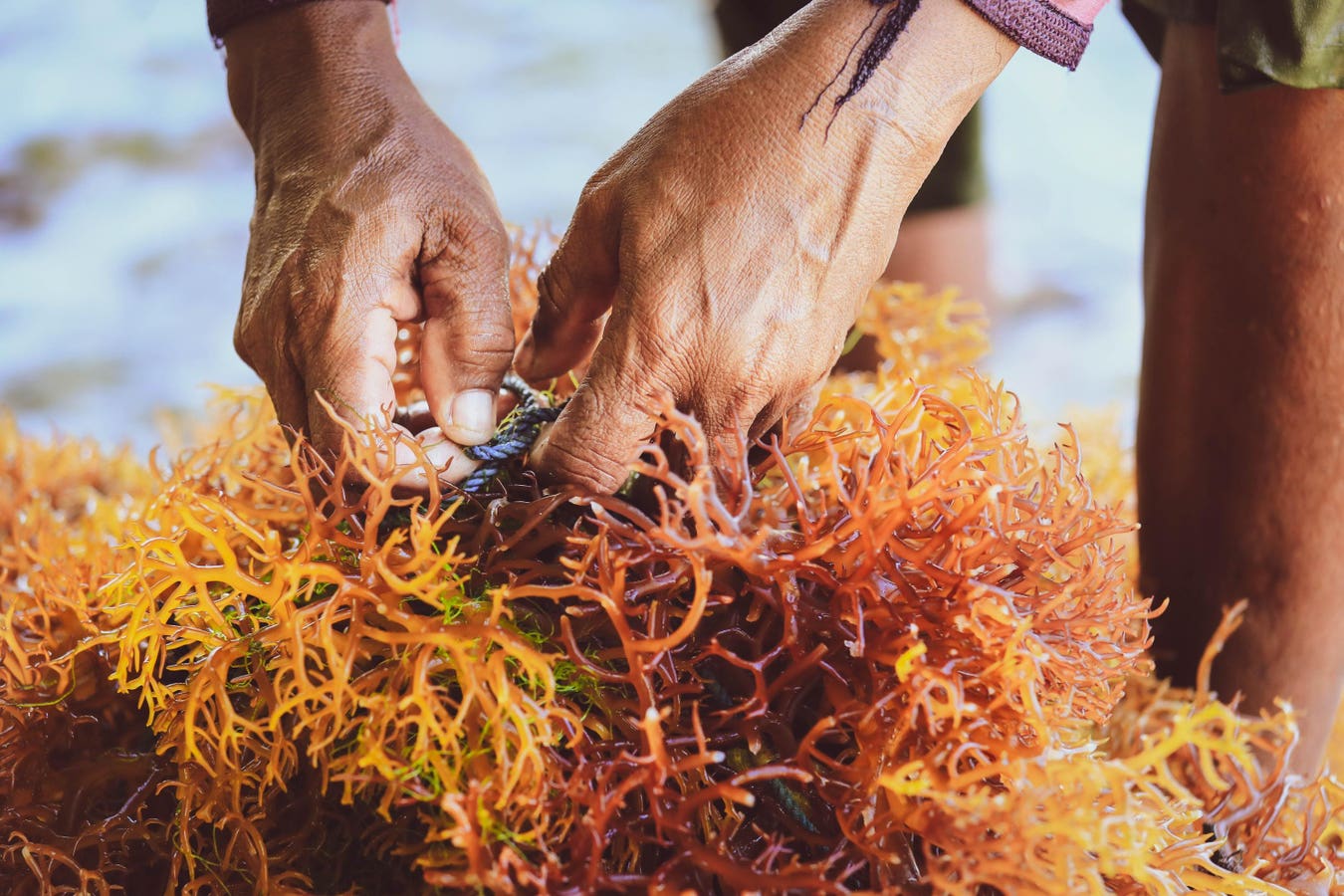Selective focus on farmer’s hands collecting seaweed at seaweed farm in Nusa Penida, Indonesia
getty
Seaweed is no longer a niche ingredient and is becoming a backbone resource across food, pharmaceuticals, and fashion. According to the a 2024 European Union report, global algae production reached roughly 38 million tons in 2024. There are opportunities for development in this sector, especially because the World Bank indicated that seaweed market could grow to $11.8 billion by 2030. This article will highlight 3 sectors that seaweed is making waves.
Seaweed Application in the Food Sector
Companies are translating seaweed’s nutritional value into accessible products. Oomee, for example, has introduced a 20-calorie canned beverage that delivers “Seabiotics” derived from red seaweed. The drink has no added sugar and offers a way to bring marine prebiotics diets. Then there is the innovation of seaweed snack industry which is projected to reach $4.66 billion by 2030 according to Grand View Research. Snack brands like Tao Kae Noi, has turned tempura-style seaweed crisps into a mainstream snack.
Founder and CEO of Oomee holding one of the Strawberry Hibiscus Seaweed Drink
Oomee website
Pharmaceutical Applications of Seaweed
Seaweed extracts are already indispensable in medicine. Alginate derived from brown seaweed is widely used in wound dressings because it absorbs fluids and promotes hemostasis which is how the body stops bleeding and stabilizes a wound. It also functions as a biocompatible hydrogel matrix for oral, transdermal, and targeted drug delivery systems. Red-seaweed on the other hand derivatives carrageenan and agar are established excipients added in controlled-release tablets, capsules, and gels, which control how they are released and improve stability. These applications demonstrate that seaweed is not an experimental curiosity but a mature tool in pharmaceutical manufacturing.
Pharmaceutical sector benefit from seaweed
getty
Seaweed Fibers, Blends and Textiles
Fashion innovators are also rethinking materials with seaweed. According to Keel Labs, its Kelsun fiber is made from seaweed biopolymers and requires no freshwater or arable land while remaining non-toxic and biodegradable. Independent sustainability platforms such as COSH emphasize both the promise and the hurdles, particularly scaling production and managing costs, but the momentum is unmistakable and forward thinking.
Seaweed is steadily replacing inputs that demand more land, water, and chemicals, while creating real consumer products with tangible benefits. Convenient foods and beverages, proven pharmaceutical gels, and textiles that fit into existing manufacturing systems and can be supplemented by seaweed. The challenge ahead is not proving viability, but it is scaling responsibly and standardizing supply. So with an industry with far-reaching potential, standardized quality controls, investment in sustainable aquaculture, and stronger integration into consumer supply chains will be necessary to propel this sector.









